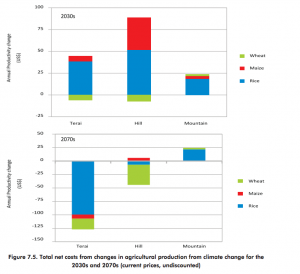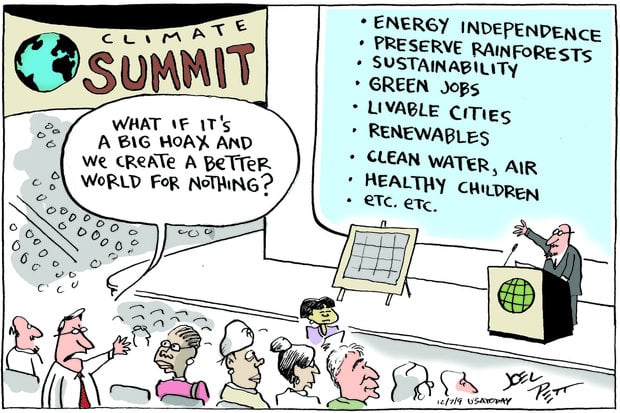Scientists have used climate models to project climate conditions in the future under various scenarios. Looking at the movement of energy and materials through the climate system, climate models are referred to as general circulation models (GCMs) (NOAA). In order to simulate the climate system, GCMs use mathematical equation of physical processes in combination to calculate each grid cell. However, this form of analyzation has limitations.
Since models are a simplified view of reality, climate models do pose constraints for decision making. Models only account for some and not all factors. There can only be a certain resolution depending on the scope of a model. Looking at different “time steps” like minutes, hours, days, or years could change the precision of the results (NOAA). For example, by using higher resolution and smaller grid cells regional climate models can give you more precise information than GCMs. The information nonetheless can still vary dramatically depending on the parent GCM used to calculate. Due to the time constrains for relevant information, larger time steps may be used in order to gain more immediate results because they can be computed much faster. Instead of more detail results, climate models are streamlined in order to run multiple scenarios. Climate models do not portray actual conditions. Since models are derived from using physics equations, changing input conditions can impact results.
Depending on initial parameters for example the GCM used for regional climate modeling, different results could be reached. Even when studying one scenario, A1B, and both using the PRECIS Regional Climate Models, changing inputs to the model changes results can vary results. Using different parent GCMs, Had-CM3 and ECHAM5, results radically changed. The Had-CM3 results indicated that the river flows would increase from the baseline in dry and very dry periods in the earlier dry season months, November to January, and a major decrease in the latter part of the dry season, April to May, especially during the 2031-2040 period (IDS-Nepal 97). ECHAM5, on the other hand, projected that there would be a decrease in flows from the baseline in the dry and very dry periods in the early months of the dry season but then instead a greater decrease in river flow in the latter part, increasing the dry season problems.
These models are important because they study the future impacts of climate change on the hydro-electricity availability which is important for the electricity sector. By looking at different hydro condition scenarios, we can better judge the future conditions. Because the Had-CM3 data shows an increase in river run off during dry month with climate change, hydroelectric power plants would be able to function lowering the total cost of power generation. ECHAM5 proposed the opposite findings. The capacity mix of electricity of hydro, thermal, and import would have to shift as a result increasing cost to US$ 2,580 million above the baseline over the present value of total investment to 2050 (104). This scenario suggests greater investments in storage plants and thermal plants.
This type of climate modeling can be useful for understanding the range of effects climate change would have in the future. We can test theories, by using multiple scenarios and GCMs, and comparing the results. Overall better-informed decisions can be made by considering all risks. Taking a holistic adaptation response to risk analysis is important (86). Aspects like allocation of assets for investment can be informed and comprehensive. Looking at projections for the future, communities can focus on resilience instead of stability. Even though there are significant uncertainties about the future climate, decision can be made to respond to climate change. Climate models can show us a range of outcomes, and through focusing on resilience we can prepare to adapt or mitigate climate condition impacts by acting. Preemptive action and decision making can decrease future costs of impact and increase human security. In conclusion, climate models are important for the decision making process because it allows you to see multiple scenarios and the effects of changing inputs and make better-informed decisions.

(When looking at the results for the red and purple, Had-CM3 as more extreme result for the latter months of April to May.)
Works Cited
National Ocean and Atmospheric Administration. “Climate Models.” Climate.gov, National Ocean and Atmospheric Administration, www.climate.gov/maps-data/primer/climate-models.
IDS-Nepal, PAC and GCAP (2014). Economic Impact Assessment of Climate Change In Key Sectors in Nepal. IDS-Nepal, Kathmandu, Nepal.



 From IDS Nepal
From IDS Nepal


 While GCMs have grown far more accurate over the past several decades, they still have some limitations. For
While GCMs have grown far more accurate over the past several decades, they still have some limitations. For


